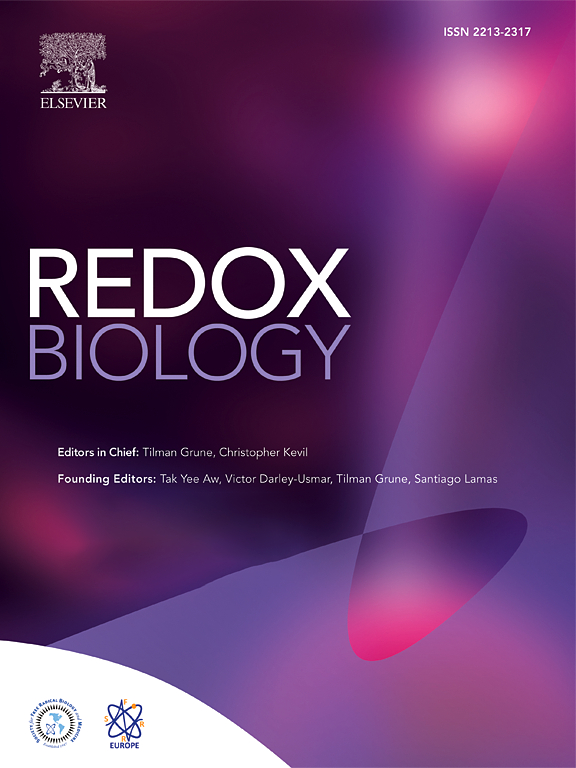Combinatorial lipidomics and proteomics underscore erythrocyte lipid membrane aberrations in the development of adverse cardio-cerebrovascular complications in maintenance hemodialysis patients
IF 10.7
1区 生物学
Q1 BIOCHEMISTRY & MOLECULAR BIOLOGY
引用次数: 0
Abstract
Patients on maintenance hemodialysis exhibit a notably higher risk of cardio-cerebrovascular complications that constitute the major cause of death. Preceding studies have reported conflicting associations between traditional lipid measures and clinical outcome in dialysis patients. In this prospective longitudinal study, we utilized quantitative lipidomics to elucidate, at molecular resolution, changes in lipidome profiles of erythrocyte and plasma samples collected from maintenance hemodialysis patients followed up for 86 months (≈7 years). Primary outcome was defined as cardiovascular-related deaths or new-onset cardio-cerebrovascular events. Cox regression model uncovered plasma/erythrocyte lipids associated with incident cardio-cerebrovascular events in the erythrocyte cohort (n = 117 patients, 37 events) and plasma cohort (n = 45 patients, 11 events), respectively. Both the erythrocyte lipid panel [PA 40:5, PI 34:2, PC 42:6, AUC = 0.83] and plasma lipid panel [PC O-34:1, GM3 18:1; O2/25:0, TG 44:1(16:1_28:0), AUC = 0.94] significantly improved the prediction of cardio-cerebrovascular-related outcome compared to the base model comprising age, sex and dialysis vintage alone. Our findings underscore the pathophysiological significance of anionic phospholipid accretion in erythrocytes in the development of cardio-cerebrovascular complications in dialysis patients. In particular, distorted membrane lipid asymmetry leads to compromised membrane deformability, aberrant cell-cell interactions and altered glutathione metabolism in the erythrocytes of high-risk individuals even at relatively early stage of hemodialysis. Our findings thus underscore the importance of maintaining the RBC pool to lower the risk of cardio-cerebrovascular complications in dialysis patients.
脂质组学和蛋白质组学的结合强调了红细胞膜脂质畸变在维持性血液透析患者心脑血管不良并发症发生过程中的作用
接受维持性血液透析的患者发生心脑血管并发症的风险明显较高,而这些并发症是导致患者死亡的主要原因。之前的研究报告显示,透析患者的传统血脂指标与临床结果之间存在相互矛盾的关系。在这项前瞻性纵向研究中,我们利用定量脂质组学在分子分辨率上阐明了从随访 86 个月(≈7 年)的维持性血液透析患者采集的红细胞和血浆样本中脂质组特征的变化。主要结果定义为心血管相关死亡或新发心脑血管事件。Cox回归模型发现,血浆/红细胞血脂分别与红细胞队列(n = 117 名患者,37 起事件)和血浆队列(n = 45 名患者,11 起事件)中发生的心脑血管事件有关。与仅包括年龄、性别和透析年份的基础模型相比,红细胞脂质面板[PA 40:5、PI 34:2、PC 42:6,AUC = 0.83]和血浆脂质面板[PC O-34:1、GM3 18:1;O2/25:0、TG 44:1(16:1_28:0),AUC = 0.94]均显著提高了心脑血管相关结局的预测能力。我们的研究结果表明,红细胞中阴离子磷脂的增生对透析患者心脑血管并发症的发生具有重要的病理生理意义。特别是,即使在血液透析的相对早期阶段,膜脂不对称的扭曲也会导致高危人群的红细胞膜变形能力受损、细胞-细胞相互作用失常和谷胱甘肽代谢改变。因此,我们的研究结果强调了维持红细胞池以降低透析患者心脑血管并发症风险的重要性。
本文章由计算机程序翻译,如有差异,请以英文原文为准。
求助全文
约1分钟内获得全文
求助全文
来源期刊

Redox Biology
BIOCHEMISTRY & MOLECULAR BIOLOGY-
CiteScore
19.90
自引率
3.50%
发文量
318
审稿时长
25 days
期刊介绍:
Redox Biology is the official journal of the Society for Redox Biology and Medicine and the Society for Free Radical Research-Europe. It is also affiliated with the International Society for Free Radical Research (SFRRI). This journal serves as a platform for publishing pioneering research, innovative methods, and comprehensive review articles in the field of redox biology, encompassing both health and disease.
Redox Biology welcomes various forms of contributions, including research articles (short or full communications), methods, mini-reviews, and commentaries. Through its diverse range of published content, Redox Biology aims to foster advancements and insights in the understanding of redox biology and its implications.
 求助内容:
求助内容: 应助结果提醒方式:
应助结果提醒方式:


